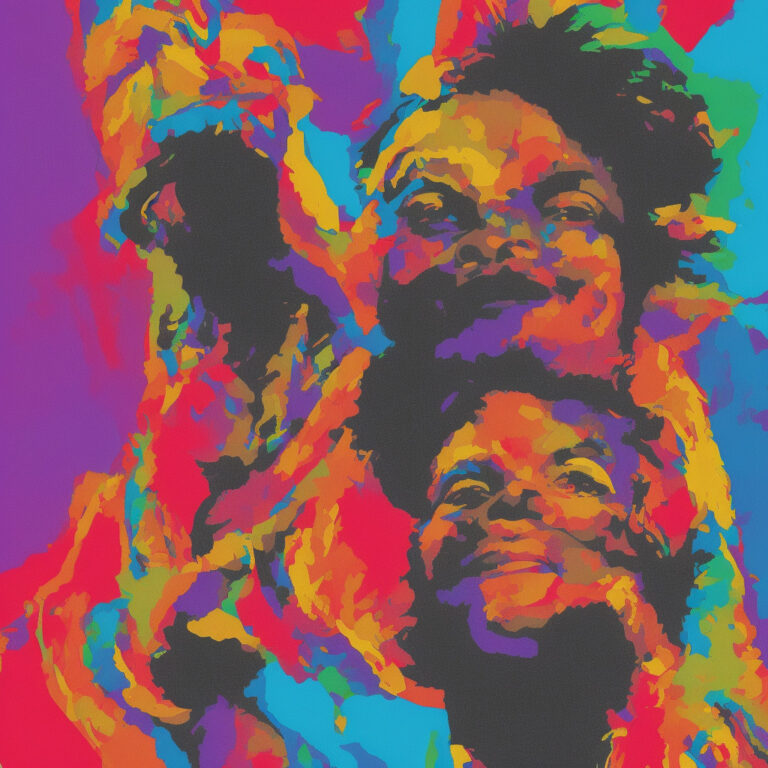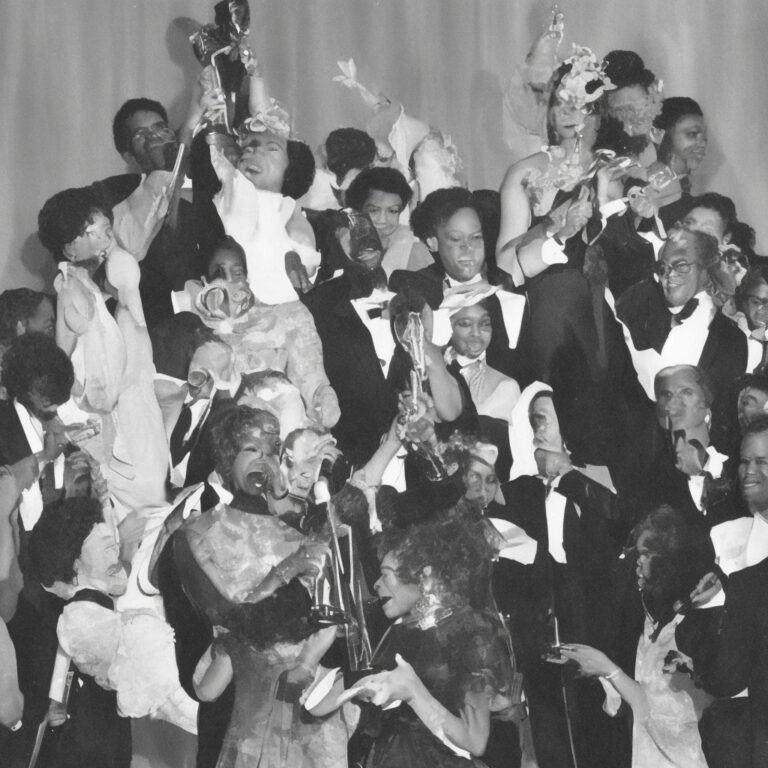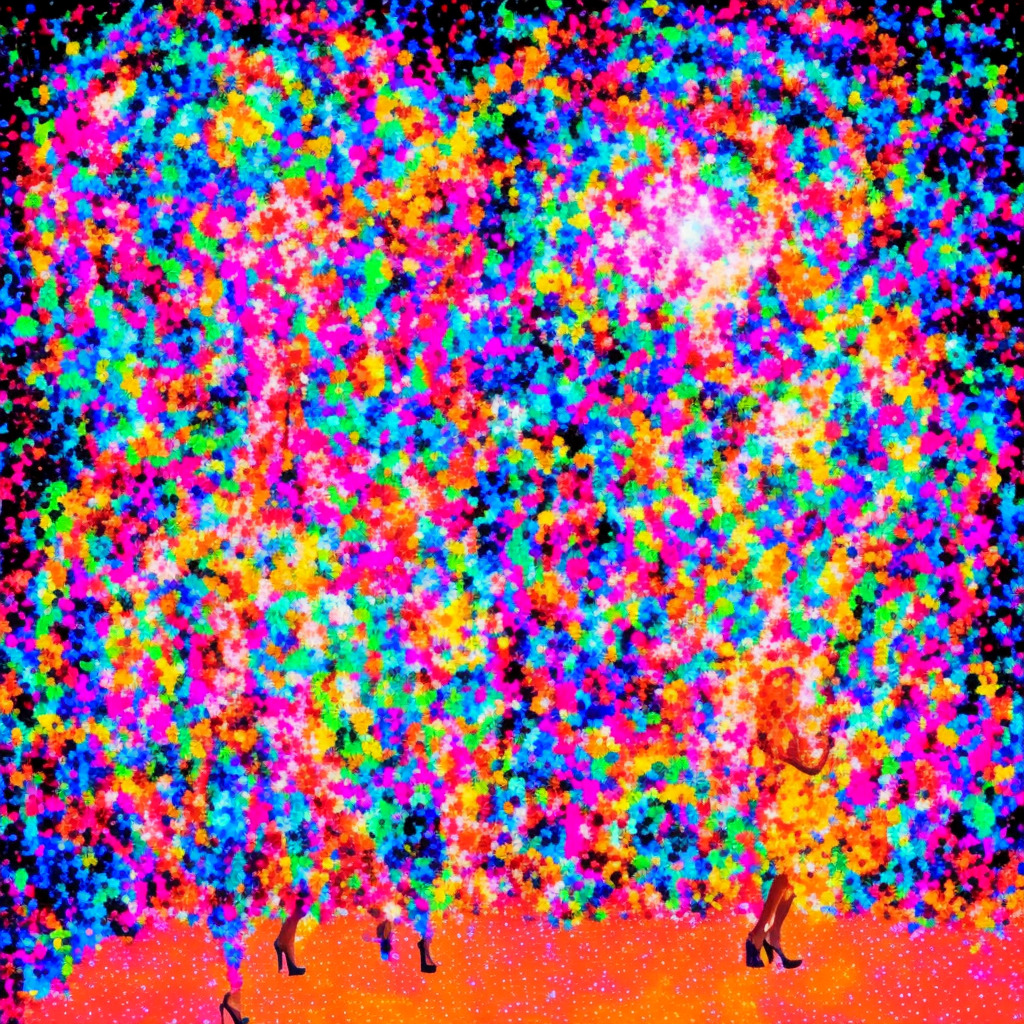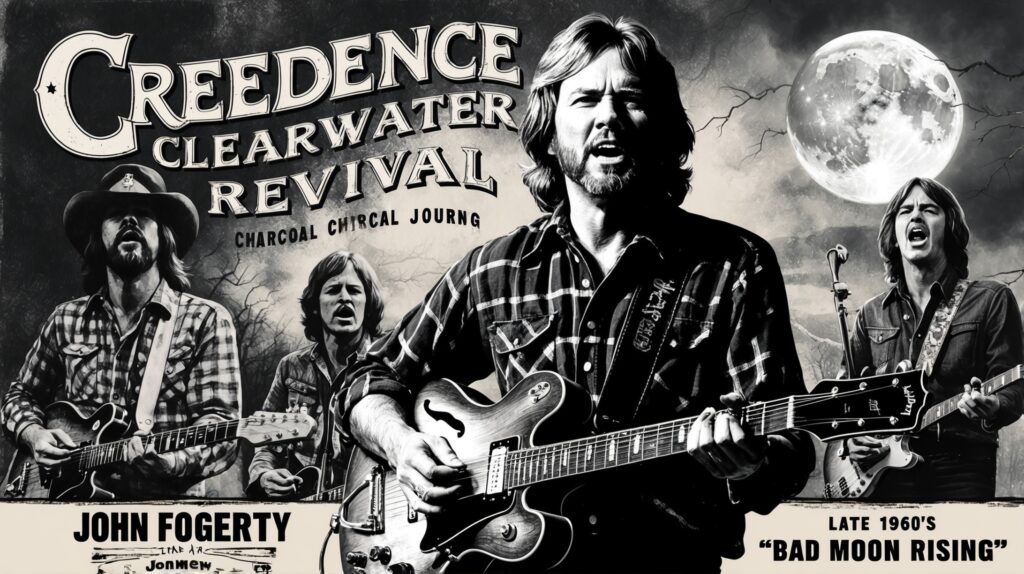?? Thelma Houston’s iconic 1976 hit “Don’t Leave Me This Way” was originally meant for Diana Ross! Groove to Thelma’s powerful disco vibes and let’s celebrate her unforgettable voice. ?? #ThelmaHouston #DiscoQueen #FunFactFriday #70sVibes Read about it: tinyurl.com/bdt3vv7w
A Soulful Classic That Defined An Era
Thelma Houston’s 1976 hit, “Don’t Leave Me This Way,” captures the essence of the disco era with her unmatched vocal prowess, transforming a soulful classic into an undeniable dancefloor anthem.

Thelma Houston, an American singer and actress, has had a long and illustrious career in the music industry. Born in Mississippi and raised in California, Houston has been gracing the stage and captivating audiences since the 1960s. With her powerful and unmistakable voice, she has made an irrevocable impact on the world of music. However, it was her iconic 1976 hit, “Don’t Leave Me This Way,” that undoubtedly propelled her to international stardom and solidified her status as a musical powerhouse.
Originally written by Kenneth Gamble, Leon Huff, and Cary Gilbert, and first recorded by Harold Melvin & the Blue Notes, “Don’t Leave Me This Way” was later covered by Houston in 1976. Her rendition was an instant success, earning her a Grammy Award for Best Female R&B Vocal Performance in 1977. The song, which served as a disco anthem during its heyday, has since been recognized as one of the most celebrated classics of the disco era. It spent several weeks at the top of the charts and became a defining track of the late ’70s.
Houston’s interpretation of “Don’t Leave Me This Way” showcased her exceptional vocal range and emotive abilities, allowing her to convey the heartache and desperation of the lyrics with raw authenticity. The song’s infectious melody and driving beat, combined with Houston’s impassioned performance, made it an irresistible dancefloor hit.
While Thelma Houston may not have achieved the same level of chart-topping success as some of her contemporaries, there’s no denying the impact she has had on the music industry. Her contributions to soul, R&B, and disco have left an indelible mark on the landscape of popular music.
However, one could argue that Houston’s reliance on covering already established hits, rather than creating original material, may have hindered her career in the long run. It’s worth noting that “Don’t Leave Me This Way” was not her only successful cover, as she also found success with her 1981 rendition of “If You Feel It.” Despite this, Houston’s undeniable talent and ability to breathe new life into classic tunes should not be overlooked.
Throughout her career, Thelma Houston has faced her fair share of ups and downs. Nevertheless, the Grammy-winning artist has remained a respected figure in the world of music. Her powerful voice and timeless renditions of beloved songs have left a lasting impression on audiences around the globe. Now 75 years of age, Houston continues to perform and captivate audiences with her soulful sound and undeniable stage presence. The unforgettable impact of “Don’t Leave Me This Way” serves as a testament to her enduring talent and iconic status in the annals of music history.
Charting the Journey to the Top
“Thelma Houston’s soulful triumph, ‘Don’t Leave Me This Way,’ conquers charts & hearts with its enduring global appeal and Grammy-winning performance.”

“Don’t Leave Me This Way” was released as a single by Thelma Houston in November 1976 under the Motown label. The song’s chart success was nothing short of impressive. Upon its release, it didn’t take long for the song to gain traction and climb the charts.
The song quickly climbed the US Billboard Hot 100 chart, ultimately reaching the number one spot on April 23, 1977. Thelma Houston’s powerful rendition of “Don’t Leave Me This Way” maintained its position at the top of the chart for an entire week. The success of the song didn’t stop there; it also skyrocketed to the number one spot on the US Billboard Hot Soul Singles chart and held the top position for an impressive five weeks. This was a clear indication of the song’s widespread appeal and its impact on the R&B and soul music landscape.
Across the pond, the song achieved notable success in the UK as well. It climbed the UK Singles Chart and peaked at number 13. This was a testament to the song’s global appeal and its ability to resonate with audiences beyond the United States.
In addition to its remarkable chart performance, “Don’t Leave Me This Way” earned Thelma Houston a Grammy Award for Best Female R&B Vocal Performance in 1978. This accolade further solidified the song’s status as a memorable and influential hit in the world of R&B and soul music.
In terms of chart trivia, Thelma Houston’s “Don’t Leave Me This Way” shares a unique connection with another version of the song. The song was originally recorded by Harold Melvin & the Blue Notes featuring Teddy Pendergrass in 1975. However, their version only managed to peak at number 61 on the US Billboard Hot 100 chart, a stark contrast to Houston’s chart-topping success. This demonstrates the power of a fresh take on a song and how a different artist’s interpretation can propel a track to new heights.
Overall, the incredible chart success of “Don’t Leave Me This Way” is a testament to Thelma Houston’s undeniable talent and the song’s timeless appeal. With its enduring impact on the R&B and soul music landscape, Thelma Houston’s “Don’t Leave Me This Way” is undoubtedly a classic that will continue to be celebrated for years to come.
The Soulful Lyrics That Held a Mirror to the Era
Don’t leave me this way
I can’t survive, I can’t stay alive
Without your love, oh baby
Don’t leave me this way, no
I can’t exist, I will surely miss
Your tender kiss
So don’t leave me this way
Thelma Houston’s “Don’t Leave Me This Way” boasts lyrics that aptly capture the essence of the late 1970s. A time when the disco era was at its peak, and people flocked to the dance floors to let loose and forget their worries. The lyrics paint a picture of a passionate plea, a desperate longing for love and connection.
In the late 1970s, the world was going through significant changes: the Vietnam War had recently ended, the civil rights movement was at its peak, and the feminist movement was gaining momentum. The disco scene was a haven for people of all backgrounds, genders, and sexual orientations to come together and find solace in the unifying power of music. Thelma Houston’s soulful voice belting out these powerful words resonated with listeners, as they too yearned for love and acceptance in a world that seemed to be tearing itself apart.
The lyrics’ raw emotion, particularly the lines “I can’t survive, I can’t stay alive without your love, oh baby”, reflect the vulnerability and urgency that accompanied the search for love during this tumultuous era. The song’s passionate plea for connection reminds listeners of the importance of love and compassion in a world that can sometimes feel cold and distant.
Through the lyrics of “Don’t Leave Me This Way”, Thelma Houston not only provided a powerful soundtrack for the disco era but also gave voice to the collective emotions of a generation seeking love, understanding, and acceptance. The song remains a timeless classic that continues to resonate with audiences today, as the quest for love and connection is a universal human experience.
A Visual Journey: The Music Video for “Don’t Leave Me This Way”
“Dazzling in simplicity, Thelma Houston’s “Don’t Leave Me This Way” music video captures the essence of disco and showcases her magnetic stage presence, making it a timeless gem in music history.”
Though Thelma Houston’s iconic disco hit “Don’t Leave Me This Way” was released in 1976, its official music video came later. The video, directed by Michael Lindsay-Hogg, showcases Houston’s powerful stage presence and her ability to captivate an audience.
Michael Lindsay-Hogg is a renowned director, whose work includes videos for legendary bands like The Beatles and The Rolling Stones. In the music video for “Don’t Leave Me This Way,” Lindsay-Hogg chooses to focus on Houston’s performance, keeping the visual elements simple yet effective. The video is filmed in a nightclub setting, with Thelma Houston dressed in a stunning silver jumpsuit, engaging with the audience and dancing on stage. The minimalist approach perfectly complements the song’s catchy hooks and disco beats, drawing focus to Houston’s dynamic vocals and stage presence.
The production details of the video remain scarce, but the budget was likely modest given the time period and the straightforward visual approach. Despite this, the video’s impact on the disco era is undeniable. It was featured in several TV shows and dance programs of the time, helping to cement the song’s status as a classic disco anthem.
In addition to the official music video, a number of fan-made videos and tributes have surfaced on YouTube over the years. These videos often incorporate footage from various live performances and TV appearances, highlighting Thelma Houston’s enduring influence on the disco scene. Some fans have even taken a creative approach, editing clips from popular movies and TV shows to match the beat and lyrics of the song, further demonstrating the track’s timeless appeal.
The music video for “Don’t Leave Me This Way” by Thelma Houston may not be as extravagant as some contemporary music videos, but its simple and effective visuals, combined with Houston’s powerful performance, make it an unforgettable piece of disco history. As we continue to celebrate the enduring legacy of this classic song, the video serves as a testament to Thelma Houston’s incredible talent and the song’s impact on generations of music lovers.
The Masterminds Behind “Don’t Leave Me This Way”
The composer of the ever-so-captivating “Don’t Leave Me This Way” is none other than the talented trio of songwriters, Kenneth Gamble, Leon Huff, and Cary Gilbert. These three remarkable individuals played a significant role in shaping the Philadelphia soul sound, which became a hallmark of the 1970s. Their notable contribution to the music world goes beyond this classic tune, as they have penned down numerous hits throughout their career. One of their most iconic songs, apart from Thelma Houston’s hit, is Harold Melvin and the Blue Notes’ version of “If You Don’t Know Me by Now.” This masterpiece beautifully showcases their versatility in expressing emotions through their songwriting prowess. The creative excellence of Gamble, Huff, and Gilbert never ceases to amaze music aficionados worldwide, and their legacy continues to inspire and influence generations of musicians.
A Legacy of Accolades and Adaptations
“Don’t Leave Me This Way” transcends time, amassing awards and pop-culture appearances while inspiring countless covers, solidifying its status as a timeless, genre-defying classic.

“Don’t Leave Me This Way” is a song that has not only stood the test of time but has also garnered numerous accolades and made numerous appearances in popular culture. Thelma Houston’s rendition of the song, which was originally written by Kenneth Gamble, Leon Huff, and Cary Gilbert, skyrocketed her to fame in 1977. The song won the Grammy Award for Best Female R&B Vocal Performance in 1978, solidifying Houston’s place among the R&B greats of the time.
Additionally, “Don’t Leave Me This Way” has enjoyed significant success across the various charts. The song peaked at number one on both the Billboard Hot 100 and Hot R&B/Hip-Hop Songs charts in 1977. It also reached number 13 on the UK Singles Chart, further demonstrating its international appeal.
The song’s infectious beat and powerful vocals have made it a popular choice for inclusion in movies and television shows over the years. “Don’t Leave Me This Way” has been featured in a variety of films, ranging from 1978’s “Thank God It’s Friday” to 1996’s “The Nutty Professor” starring Eddie Murphy, and even in the post-apocalyptic world of 2006’s “Children of Men.” Television audiences have enjoyed the song’s inclusion in episodes of several popular series, such as “Pose,” “RuPaul’s Drag Race,” and “Cold Case.”
The enduring appeal of “Don’t Leave Me This Way” has led to numerous cover versions of the song being recorded and released over time. One notable cover is by British synth-pop duo The Communards, who took the song to the top of the UK Singles Chart in 1986. Their version is considered one of the best-selling singles of that year in the United Kingdom. Additionally, this rendition enjoyed substantial success in Europe and Australia, further solidifying the song’s status as a timeless classic.
In conclusion, Thelma Houston’s “Don’t Leave Me This Way” has garnered numerous awards, made appearances in various forms of media, and inspired countless artists to create their own renditions of the song. Its legacy continues to influence the world of music and popular culture, ensuring that this disco anthem will continue to resonate with audiences for years to come.
Delving into the Musical Depths
“Don’t Leave Me This Way” is a remarkable piece of work that showcases Thelma Houston’s unique talent, with a musical structure that has captivated listeners for decades. The song itself is written in the key of A minor, which provides a perfect balance between the emotional intensity of the lyrics and the groovy, danceable rhythm that has made it an enduring classic.
The chord progression follows a vi-IV-I-V pattern throughout the song, which contributes to its catchy, infectious quality. This progression is common in popular music and creates a sense of familiarity for listeners, making it easy for them to sing along and get hooked on the tune. The chords used in the progression are Am, F, C, and G, which are all diatonic chords within the key of A minor. This lends the song a sense of cohesion and unity that resonates with audiences.
The tempo of “Don’t Leave Me This Way” is set at a brisk 120 beats per minute, imbuing the song with an energetic and danceable quality. The rhythm section, consisting of drums and bass, lays down a solid and driving groove that propels the song forward, making it impossible not to move along to the beat. The syncopated rhythms and use of 16th notes in the percussion provide an added layer of complexity and interest to the track.
One of the standout features of the song is the dynamic use of horns, which play a vital role in elevating the energy and emotion of the track. The brass section consists primarily of trumpets and saxophones, which punctuate the melody with bold, brassy accents. These instruments add a layer of excitement and intensity to the song, which is further amplified by Thelma Houston’s powerful and emotive vocal performance.
The song also features an engaging instrumental break, where the focus shifts from Thelma Houston’s vocal prowess to the talented musicians behind her. This section is characterized by a brief but memorable guitar solo, which serves to showcase the skill of the guitarist and adds yet another dimension to the overall sound of the track.
In conclusion, “Don’t Leave Me This Way” is a masterfully crafted song that artfully blends various musical elements to create a memorable and enduring hit. Its combination of a catchy chord progression, infectious rhythm, and powerful instrumentation has solidified its place as a classic in the annals of popular music.







